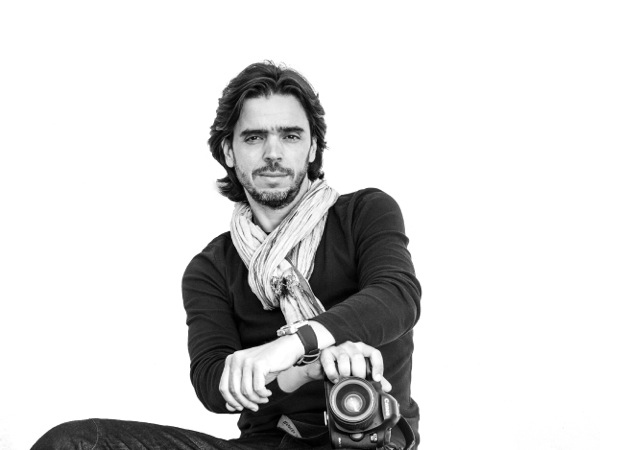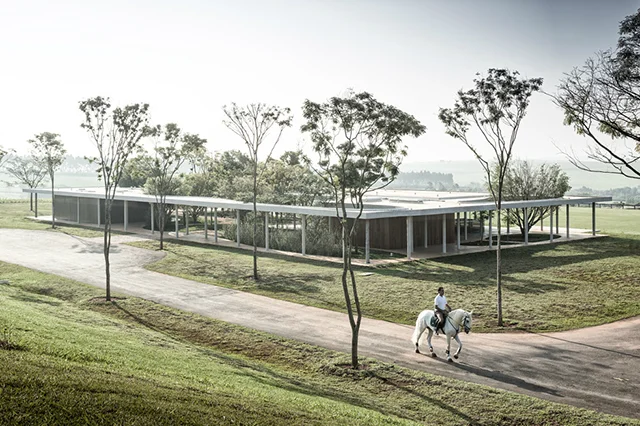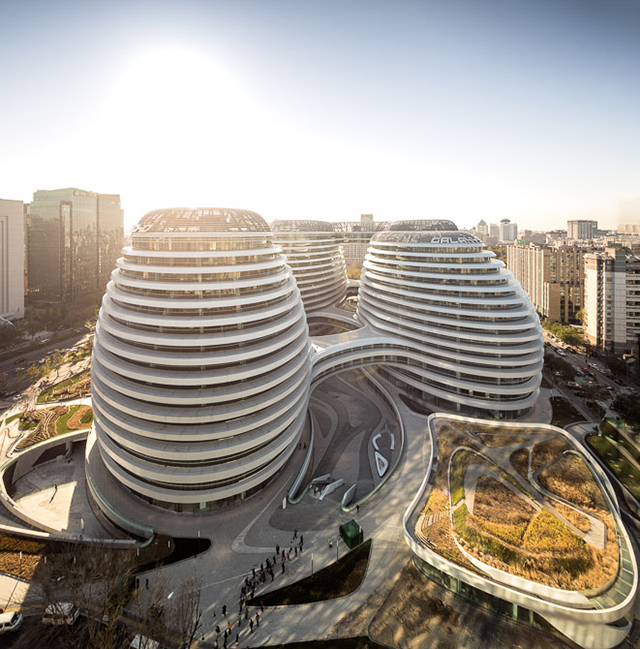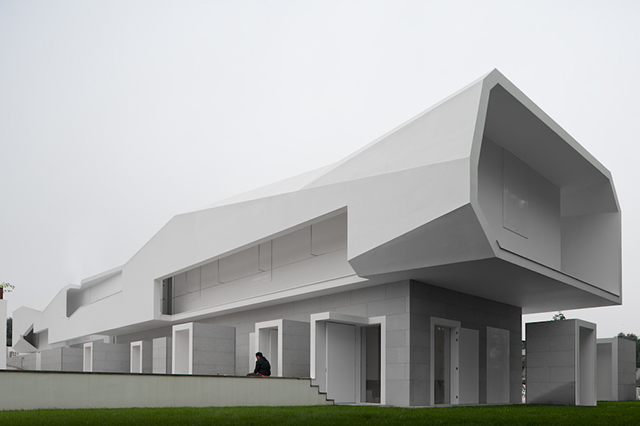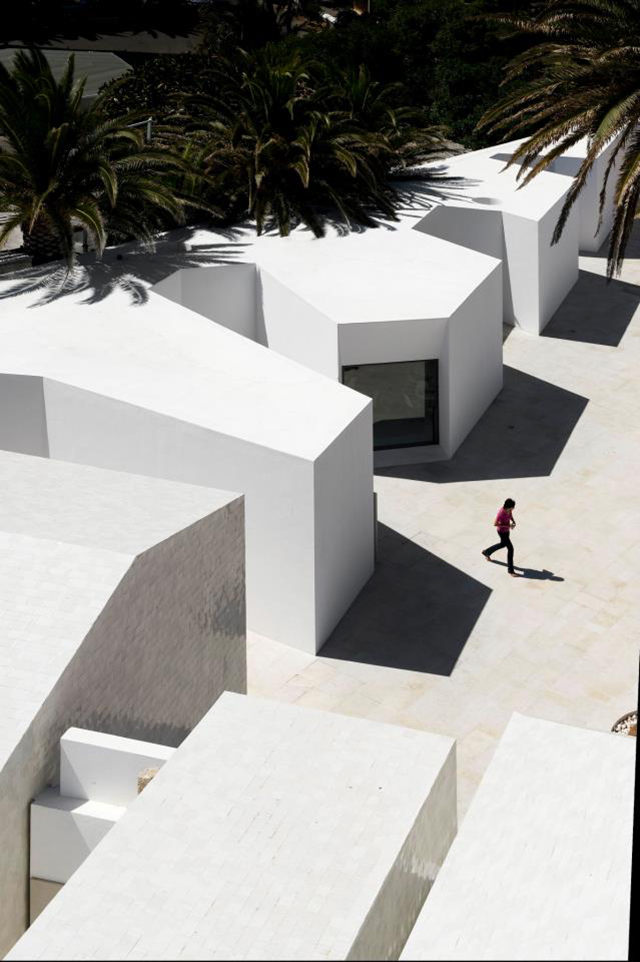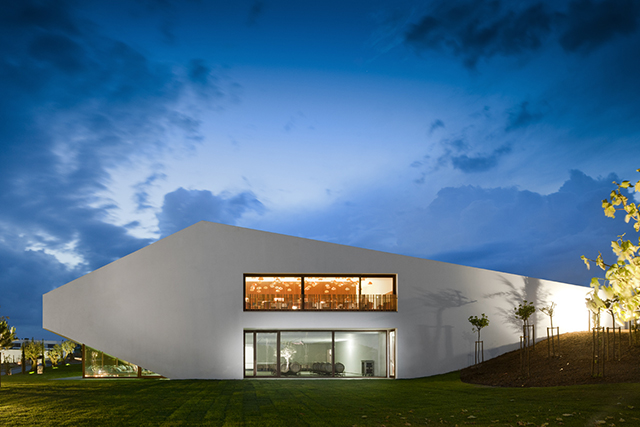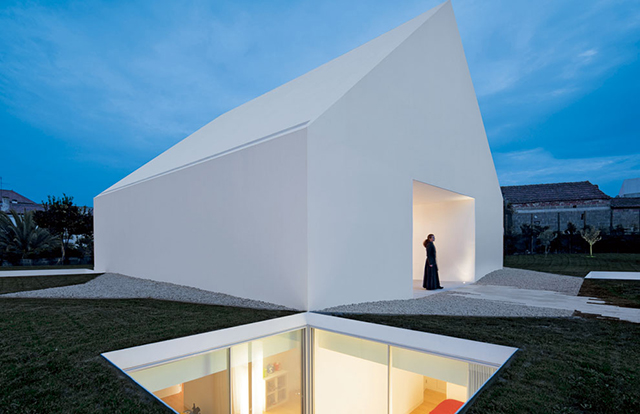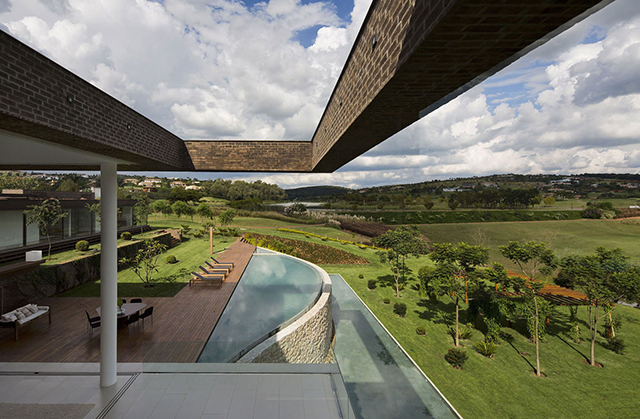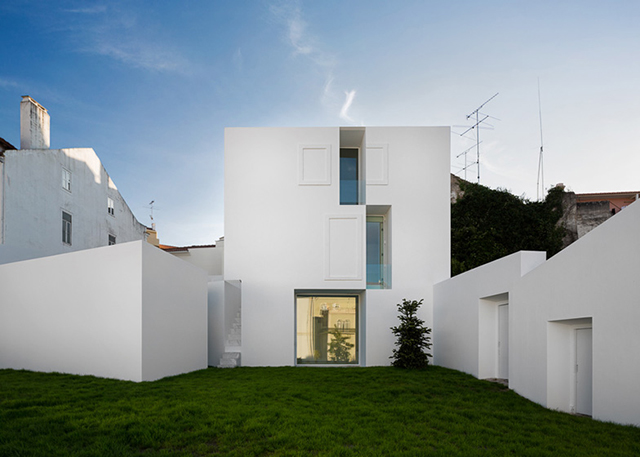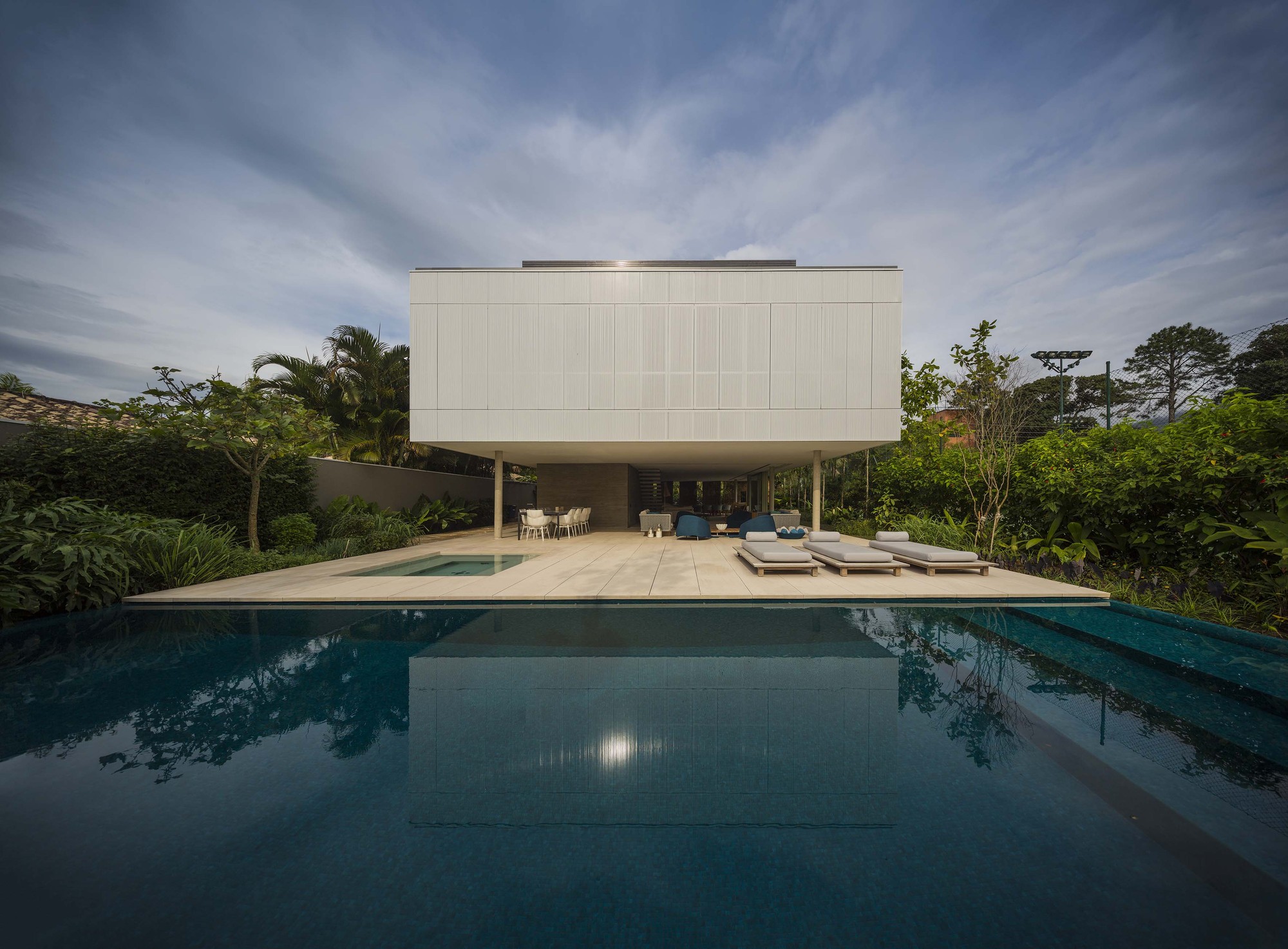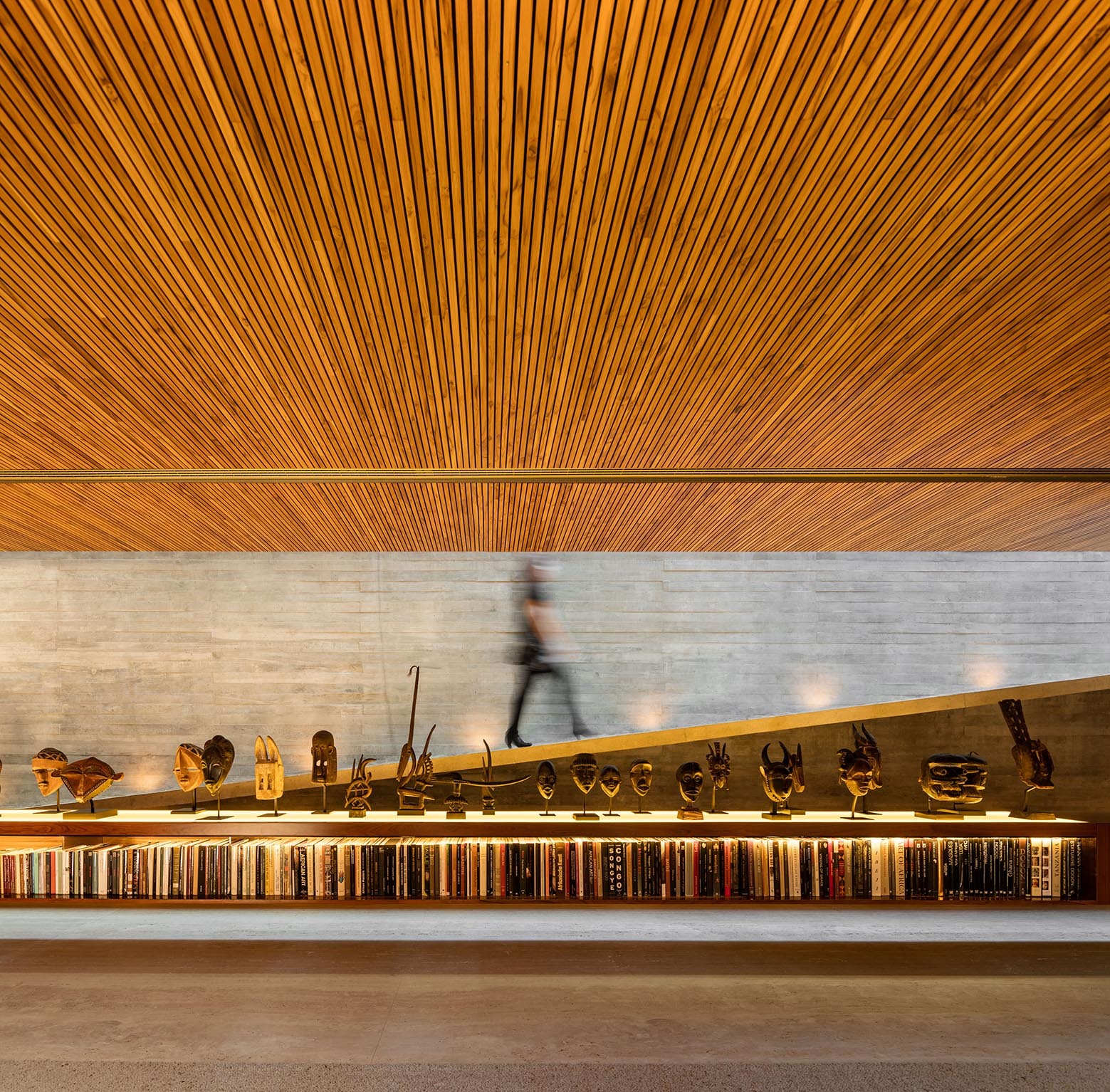The Man Behind The Camera of Modern Architecture: An Insightful Interview With Fernando Guerra
/Fernando Guerra has been behind a camera since he was 16 years old. His life has taken him on a considerable journey to document the most pivotal architecture of our generation. You might not know it, but you know his work. If you have seen the architecture of Álvaro Siza, Isay Weinfeld, ArthurCasas, or Zaha Hadid, then you have seen the photographs of Guerra. After working with Guerra for the past two years, publishing an array of his photographs on KNSTRCT, we thought it was time to hear the voice of such a monumental figure in the world of architecture. Guerra is a humble man, passionate, talented and if you ask his brother, he's a workaholic. Together, Fernando and his brother Sérgio, formed Ulitmas Reportagens, an image bank full of Fernando's high quality photographs back in 2004. Fernando says Ultimas Reportagens "started based on this idea of sharing and today has become a mandatory stopping point for any architect to pass through. It will be online forever. These works will never cease being available online. And in 20 or 30 years, the children I photographed in a house will be able to see themselves in their parents' house, when the house was new. It ends up almost being a time capsule."
Perhaps, it is to the credit of Guerra that an independent design publication, like KNSTRCT, is here today. It was in fact Guerra, and his 'open source' approach to sharing his work, that allowed the world to see cutting edge photographs of architecture online without charge. Before, architectural photography was sort of locked in a box, figuratively, only accessible by lucrative media outlets who could afford to buy the shots. Guerra decided to share his images for free - essentially pulling out the plug, and allowing the world to view modern architecture in his growing photography bank of over 700 projects.
Catching up with Guerra wasn't easy, as he travels non-stop from location to location on shoots. But when we did, the photographer had a lot on his mind! Below is the untouched transcript of Guerra's experiences, passions, and photography techniques - in his own words.
K: You are a trained architect. How did you make the leap from full time architect to full time photographer?
FG: I’ve been taking pictures since I was 16 years old. During those first years I never thought that later on I would do it professionally and have a staff and hundreds of clients. At the time I just wanted to do my coursework, get an internship in an architecture studio and live the traditional life of an architect with my office and projects. But despite having started this way, my life quickly took another direction. But it was all very gradual. I started having less time to design projects, which was something that I always liked to do, but also less time for the lectures on architecture I was giving at the University of Coimbra. My photography work started taking over my life, as well as Sergio’s.
When I started, small cameras were not used to photograph architecture, but that’s exactly what I used. It was due as much to a lack of experience as to simply being the tools I had always worked with. I began intuitively. Catching a detail here, an elevation there. Without guidebooks or masters. And this lack of experience together with the use of lightweight cameras allowed me to use freedom and speed of movement when photographing a work. Being able to follow the flow of people, the sun, shadows and reflections jointly with the fact that I like to tell short narratives with pictures as if they were stories. A photograph is only a minute fragment of an experience, but quite a precise one. Fulfillment comes from recreating this experience after a single day spent on location. Working from a set of images with traces of storytelling. Thus, FG + SG was born in a very natural way, with clients appearing gradually over the last decade, to the point today where we work with over 200 studios throughout the world and with various associates, magazine and blog publishers on a daily basis. This is my life now. I feel like I work on my photography during all waking hours, whether it is shooting while traveling, producing new content for our website, working on new books or other projects. Everything revolves around architecture. I am often asked if I miss designing architectural projects, but now more than ever I do not. There are many ways of doing architecture, to live it intensely. Today I share what I do and live happily doing so. With my work there are few intermediaries between what I want to do and what I will have ready in a few weeks, and that is priceless. In architecture the timing is very different. One always talks of years instead of days, and I especially like the fact that the result of my work depends more on me than on external factors beyond my control. In the world of architecture there are many problems that have nothing to do with being more or less creative. Photography is freedom, regardless of being a very special freedom in which we live trapped in daily sessions, deliveries, editing and travel.
K: Why did you choose architecture as your photographic specialty?
FG: I’ve taken pictures since I was very young, but never wanted to photograph architecture. Even during my studies and in my professional practice in which I designed projects and witnessed their fruition and followed their development, I never took photos of them seriously. At the same time, I never stopped taking pictures in general, often on the way to and from one of my projects. Photographing architecture has always been something completely boring to me. It’s a kind of photography about which I didn’t read anything. I didn’t buy the most appropriate cameras or lenses. Nothing. It was as if there were two realities: architecture on one side and photography on the other. They completely occupied my day, but were impervious to each other.
I have never been interested in a certain "school of architectural photography" devoid of people that is very clinical, cold, and empty: shooting a building piece by piece as the photographer passes through it, regardless of the light or time of day; a posture of almost intellectual arrogance, exhibiting a taste for pure minimalism. I like to shoot a work as an invisible photojournalist, as if it were a journalism piece, which of course it is not. I like to show the reality of the project in a way. Such as including anyone who happens to be present in the work by chance —or not. So beyond just showing the scale and form of a project, I am interested in using the people present to give it meaning. To give it life.
(FG Continued) All the references I had of architectural photography were of a picture frozen in time that lived independently from its surroundings and completely disconnected from the most important aspect of architecture, which is people. Often they were photographs taken in quick passing, in two or three clicks. Never in two or three days, immersed in the project. Never something like living with a family for two days as I did last August in a house near Sao Paulo.
It is so good to give as much importance to the people who inhabit a space as to those who pass through it more or less rapidly. These are the people who bridged the gap between my first photographic work and the creation of a professional architectural record. And even today, people are not simply the link to a project, but through their presence give meaning to what I do. Maybe this was one of the reasons that led me to choose this type of photography over others that I dabble in sometimes like fashion or portrait.
K: Have you ever been put into dangerous situations trying to get the 'perfect' shot?
FG: Yes. Up until two years ago I would climb, jump, and run along the top of walls, roofs, etc. Then one day I fell at a site. In a well-known house in the Azores, and and I quickly changed my tune. There’s nothing like lying on an operating table to alter the way we think about the world! Today I'm much more cautious and the photos keep coming. But now I understand that dying while taking pictures is stupid and that a photo isn’t worth certain risks.
K: When you photograph a piece of architecture, do you become connected to it? If that piece of architecture were to eventually go up in flames, would it affect you?
FG: When I pass by a project I say the same thing as the architect who designed it: "I did that." People smile because a connection to a project is easily understood. It varies in intensity, depending as much on the project itself as on the kind of shoot I’ve had, the photographs that have come out of it, as well as on the relationship I have with the architect. It's already happened that a project I’ve photographed has gone up in flames, or simply been demolished and it is always very sad. What I try to do in my work is to freeze the moment: a day in the life of the work with a set of images that will forever serve as a memory of the work regardless of the use that it will have. But it always affects me a lot when pictures are all that remains of a work. All the same, if something is going to survive beyond memories, let it be the photographs.
K: Can you give us some behind-the-scene details on what the process of photographing architecture is like for you?
I work with a great team of five people who help me to edit the work, manage clients, and just let me concentrate on what I do on a given day, which is taking photos. Sérgio is entirely in charge of the studio’s management, and the remaining staff help me with editing, managing and updating our website, designing new books, etc.
Most of the time, I work on direct commission from architectural firms. The client is the architect. But there is no fast rule, if anything because the scope of what I photograph is very diversified: sometimes it is a house, a hotel, or a factory. We also work on articles for magazines or books from publishers from around the world. My clients are thus very diverse and come from various areas linked to construction, planning, design, and project dissemination. I have the fortune of working with people who inspire me daily and who really advance the way we think about architecture. Portuguese clients such as Aires Mateus, Carrilho da Graça, ARX Portugal, Promontório are all important references in architecture that help me to create a unique portfolio of images on a daily basis. Being the photographer for the most awarded and recognized Portuguese architect of all, Álvaro Siza, and having followed him on his projects and travels for some team now, is also a great privilege. Maybe the greatest.
(FG Continued) The main reason I have picked up a camera to take pictures these past twenty-seven years has been simply for the pleasure of feeling connected to something special. A connection to the craft, to people, and to the way it gives me the chance to see new places and to listen to new stories. It's a way to exercise my curiosity about places and about the world. And it remains so today. It makes no sense otherwise, even with a professional attitude dictated by obligations in maintaining my studio, with my staff working at one hundred per cent capacity, the long hours, the travel and being sleepy all the time, because there's not a lot of time to rest, and of course given that the work has to be perfect — no excuses.
Given my responsibility in conveying a project's message, in which my eyes are often solely responsible for how a particular work is seen around the world, the record must be clear and very precise. Such as what the changes in color and textures are throughout the day. If, on the one hand, the project itself is important, it is also essential in my work to show its surroundings, to contextualize the project in its environment. At the end of a day's work, I will have photographed the answers to three simple questions: "Where is it?, "What is it?" and "What is it for?". The objectives are simple, but how to respond to them is complex because so much does not depend on me. Every day of my life, I am in pursuit of the perfect photograph. An image that brings together everything that I want to capture in order to look at it later. The only problem is explaining what I want to capture, as it changes with the seasons. The only thing of which I am certain is that the perfect photo is always rare and does not happen every day. But if it tells the story of a particular moment well, then it is probably perfect in some way and it means the day's goal has been accomplished.
K: Where are the places you travel to in order to gain inspiration?
FG: I travel a lot for work and I think the inspiration comes from my day to day, not from any location in particular and from all of them. Probably my favorite place is my home, in my office or on my sofa after returning from a series of trips with new work. These are always the most relaxed moments, filled with a sense of accomplishment. Once the camera batteries are recharged, I'm ready to go again. I do not stay long in the same place. Nor can I, for fortunately we have a lot of work.
K: Besides your camera, what is your favorite photography gadget, lens, or lighting mechanism that you use on your shoots?
FG: As I spend a lot of time on the road, I am surrounded by tools that allow me to stay connected to my base: to the office as well as to my home and friends. And I really need that connection.
I love cameras and lenses, like any photographer does. It’s something we all have in common. Especially equipment that I do not shoot with on a daily basis, but that I always carry with me. The ones I use for work are like appliances: competent, almost perfect. Yet they are a bit boring, especially since I spend all day with them in my hands. A good rangefinder –old or new- hiding in the palm of your hand and used invisibly in the streets is an object that provides great pleasure and helps me to improve the reflexes that have to be very fine-tuned in my line of work. I’ve had some of my lenses for more than twenty years. Others I bought just a few days ago. I never stop searching or am satisfied with what I’ve got. It is a relentless pursuit to do better, faster, and improve quality.
When I am shooting, however, all this material becomes transparent and I can’t even remember that I have it. The important thing is always what I am shooting and the photos that result from the shoot. But the tools do not cease to be part of the process.
Perhaps our drone is one of our most important gadgets. Especially because we developed it. Piece by piece. The ability to fly with a camera opened up so many possibilities that we are still trying to manage a portfolio of commissions for this very special service. Above all, it is fantastic to be paid to fly remote- controlled helicopters and call it work. It took a year of hard work to ensure that a job done up there was done as well as job down here. The extra dimension is enthralling...
K: Alright now - forget all the seriousness, philosophizing, and obsessions of the industry - what is the funnest part of being a working, traveling photographer?
FG: Not the money or the girls like some people think! All jokes aside, the best part is the people I know. Not the ones who populate my photos, but the ones I know and have become friends with. And, of course, the lunches and dinners and good food and wine. Most importantly, however, and happiness isn’t possible without it, is at the end of every job having beautiful images that stay with me forever.
And just to balance out the question, the worst thing about being a traveling photographer is waking up in the middle of the night and not quite knowing what bed I’m in. But in this day and age, I imagine there are a lot of people who wouldn’t mind that and having a different office every day is priceless.
*** Jack-of-all-trades Guerra shared an intimate sketch of Architect Álvaro Siza enjoying good wine. (Last image.) ***


